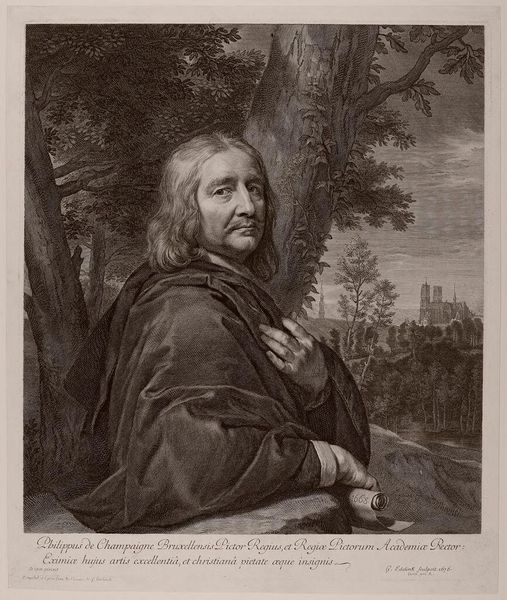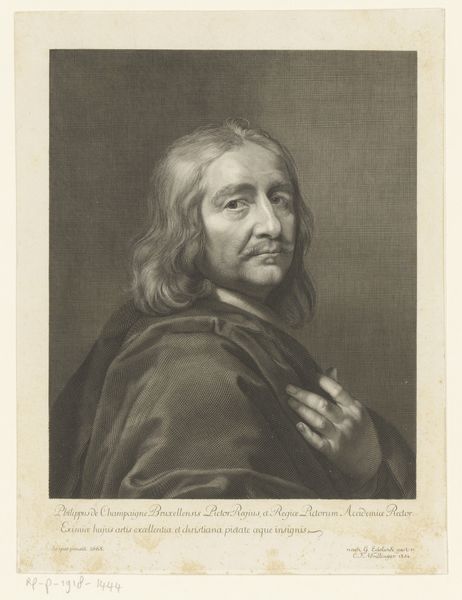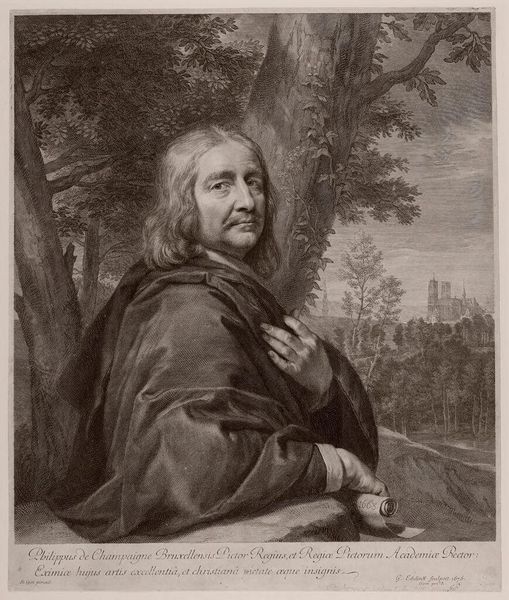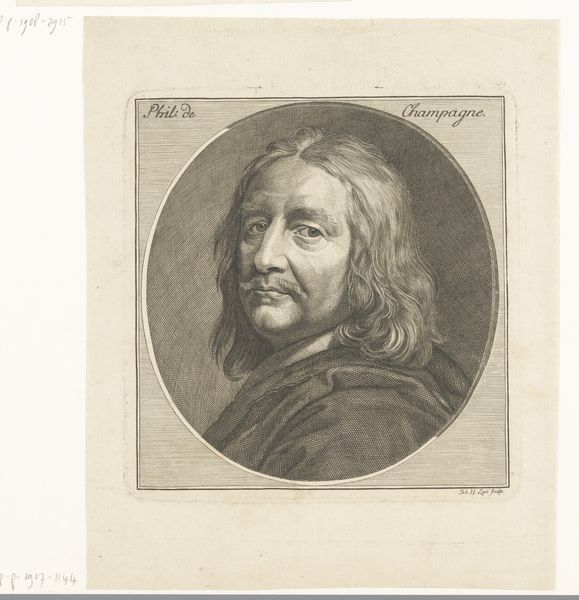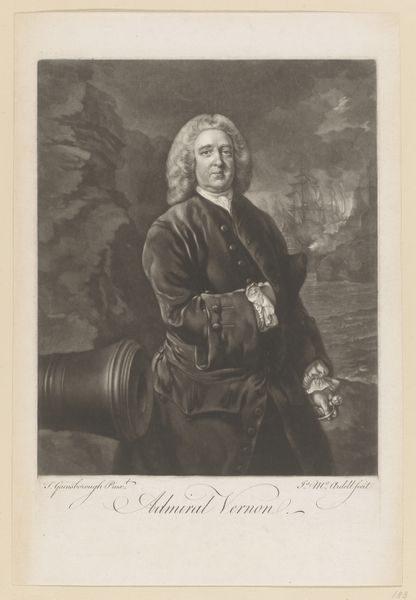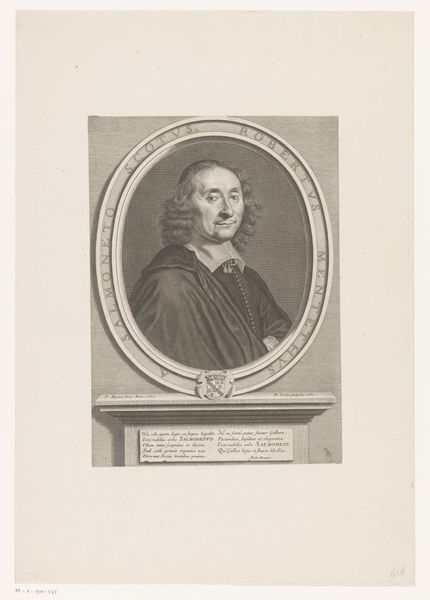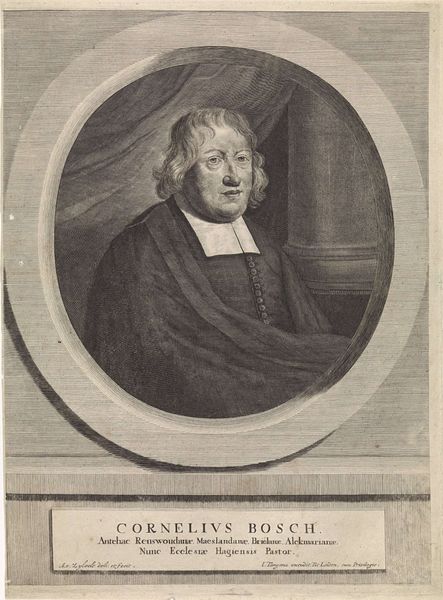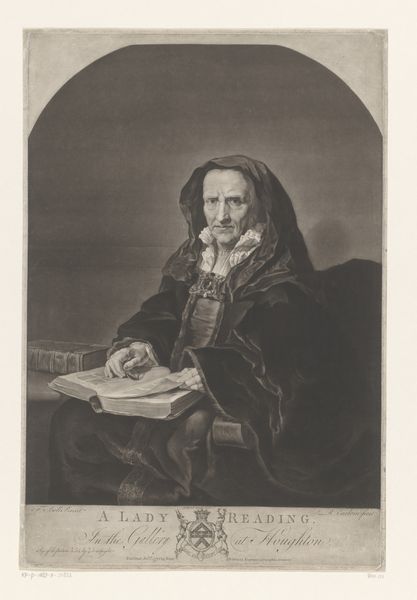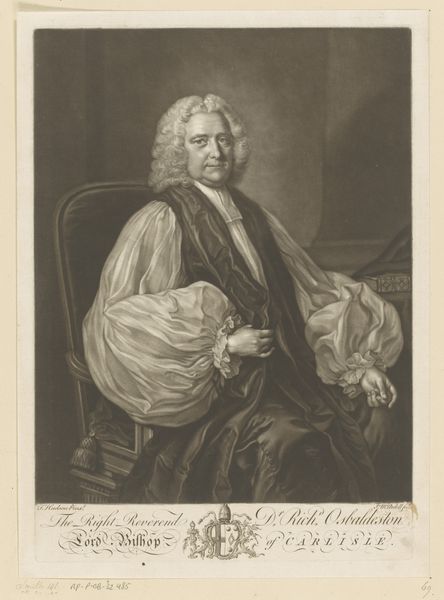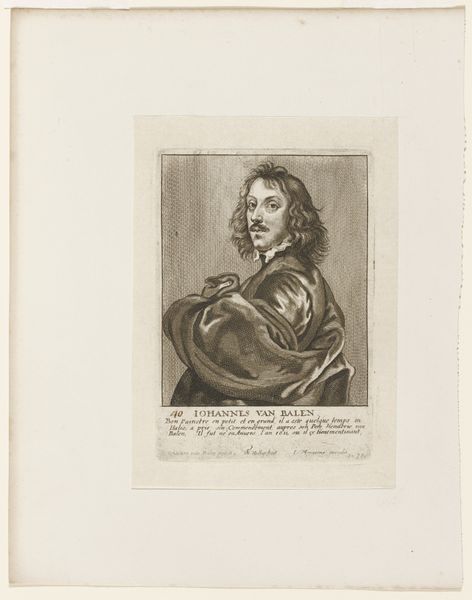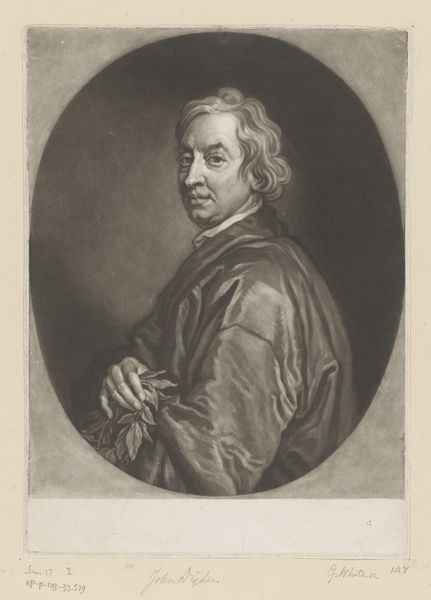
print, engraving
#
portrait
#
baroque
# print
#
charcoal drawing
#
pencil drawing
#
engraving
#
realism
Dimensions: height 397 mm, width 333 mm
Copyright: Rijks Museum: Open Domain
Curator: Looking at this print, there’s an immediate sense of gravitas, a thoughtful almost melancholic mood. Editor: Indeed. Here we have a 1676 engraving by Gérard Edelinck, a portrait of Philippe de Champaigne. It’s quite remarkable, both for its artistic quality and its place within a network of power. Curator: Philippe de Champaigne, a prominent painter himself... What is emphasized through the visual language here? The gaze directed toward us carries something both assertive and contemplative. It speaks of positionality. Editor: You pick up on that tension beautifully. The imagery surrounding him – the landscape, a hint of architectural grandeur in the distance, all suggest a learned understanding of enduring motifs, and speaks to status. This recalls traditions of portraits as affirmations of power and social order during the Baroque era. Curator: I think it’s more than simply the iconography of class; the symbolic rendering gestures to his deeply invested intellectual life as a major European artist and professor at the Académie Royale de Peinture et de Sculpture. His gaze reads as almost defiant to a kind of tradition and expectation. I read that in a powerful way, knowing he stood at the nexus of royal and artistic politics in France during this period. Editor: What resonates most deeply for me, in this close likeness, is that de Champaigne's physical placement next to a tree indicates his rootedness, a connection to history and established lineage. And that rolled parchment… perhaps an emblem of intellectual achievement, or his creative output itself. But I wonder if his somewhat loosened robe tells us he seeks liberation from established conventions. It creates an undeniable intimate feeling. Curator: Exactly. I see an individual asserting their complexity against established authority; de Champaigne existed within very powerful networks, yet held to his individuality through all the ideological tensions in the 17th Century. It's precisely that complexity which fascinates me. Editor: It reminds us that symbols always work on multiple registers; tradition is never accepted without moments of reinvention. It is certainly in view, a great achievement on the artist’s part.
Comments
No comments
Be the first to comment and join the conversation on the ultimate creative platform.

